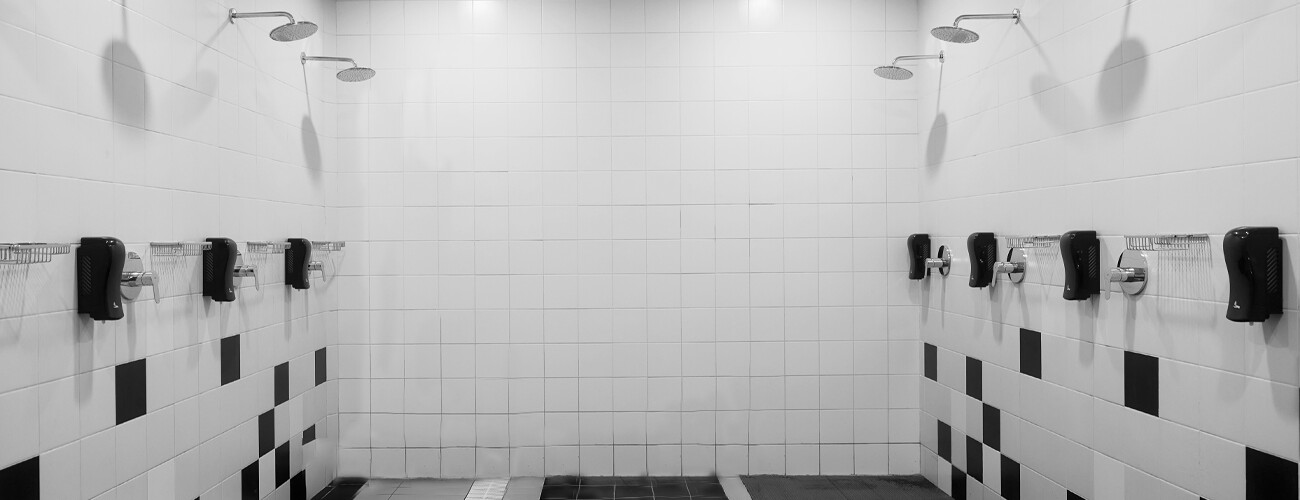Foam washing method in wet rooms
In wet facilities, spreading the detergent solution onto the surfaces as foam is easier and more effective when using a low-pressure washer. A good low-pressure washer is easy to use and forms a dry, durable foam.
In the foam washing method, the detergent is spread evenly on the surfaces, guaranteeing that it is allowed to rest on the surfaces for a sufficient amount of time. Please note, however, that a low-pressure washer is no substitute for mechanics! Choosing the right nozzles can influence the amount of water and cleaning agent used.
The daily cleaning method used in wet areas is to wash with alkaline and acidic cleaning agents. It is important to let the cleaning agent work on the surface and use good mechanics. Efficient mechanics can be achieved with abrasive cleaning tools and cleaning machines such as a single-disc machine or a scrubber dryer. It is essential to thoroughly rinse the surfaces and dry them. A steam washing machine can also be used.
Interim cleaning is done during opening hours to ensure the functionality of the facilities and the agreed level of cleanliness. Interim cleaning is done with the necessary cleaning methods. The number of intermediate cleaning times during the day depends of the number of visitors.
Recommended products for wet rooms:
The working order of cleaning pool areas with foam washing method
- First, remove possible secretion stains
- Empty trash containers and remove loose dirt from the floor by rinsing
- Wash the floor drains
- Wet the outside of pool edges, fixtures etc.
- Apply foam to the surfaces with a low-pressure washer and let it work
- Wash the surfaces, rinse them and dry them carefully
- Apply foam to floors and let it work
- Wash the floor with a single-disc machine or a scrubber dryer using an indirect method
- Use a scrubbing implement in areas that are not accessible with a machine
- Rinse and dry the floor carefully
Maintenance cleaning can be performed using a scrubber dryer when intermediate cleanings with a scrubber dryer are done frequently enough. A sufficient level of hygiene must be ensured with surface cleanliness samples.
The working order of cleaning washrooms with the foam washing method
- First, remove possible secretion stains
- Empty trash containers and remove loose dirt from the floor by rinsing
- Wash the floor drains
- Rinse the vertical surfaces and fixtures from the bottom up
- Apply the cleaning agent solution with a low-pressure washer from the bottom up and let it affect
- Wash the surfaces with an abrasive tool from the bottom up
- Rinse the vertical surfaces from top to bottom and dry the surfaces
- Spread the cleaning agent solution on the floor
- Wash the floor with an abrasive tool or use a single-disc machine in larger spaces
- Rinse and dry the floor carefully
The working order of cleaning toilets with the foam washing method
- First, remove possible secretion stains
- Empty trash containers and remove loose dirt from the floor by rinsing
- Wash the floor drains
- Wipe the contact surfaces with a microfibre cloth
- Wash the hand basin and surrounding surfaces, rinse and dry them
- Wash the toilet seat and surrounding surfaces
- Spread the cleaning agent solution as a foam on the floor
- Wash the floor with an abrasive tool or use a single-disc machine in larger spaces
- Rinse and dry the floor carefully
